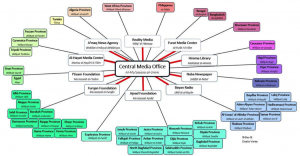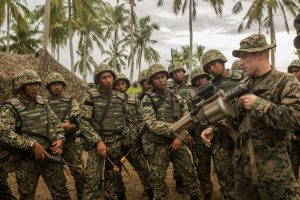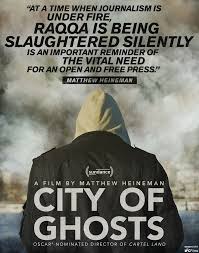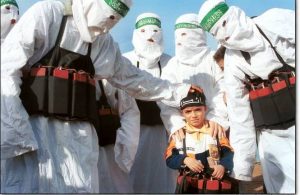No insurgency in recent memory has enjoyed as much sensationalist news coverage as the Islamic State, which has consistently been referred to as the “most powerful,” “most dangerous,” and “most barbaric” terrorist outfit since its 2014 blitz across Iraq and Syria. But as the vast gains made against the organization in the last two years show, it was never as invulnerable as it was made out to be, like reported by warontherocks.com .
Now the Islamic State’s caliphate is collapsing: Its territories are shrinking, its manpower is dwindling, and its cash reserves are hemorrhaging. By this time next year, the group as we know it today may be barely recognizable. But its legacy will live on virtually, because the superlatives were justified in at least one regard: its information operations.
When it comes to strategic storytelling, the Islamic State truly has been unmatched—not only in terms of the quality of its output, but in quantity, too. Since its caliphate declaration in 2014, it has produced literally tens of thousands of official propaganda products, meticulously arranged and always on message. Even now, at its lowest ebb, the group is churning out about 20 unique media products each day. For years, the Islamic State has been allocating substantial resources to producing, refining, and disseminating its core messages, to both followers and adversaries, seeking to ensure that its ideology will live on even as its territorial sway declines.
Image Management
More fervently and successfully than any other insurgent group — except perhaps Hizbullah — the Islamic State has shaped its image and communicated its brand to the world. Its leaders evidently value narrative dominance more than their enemies do. Consequently, they have put, in proportionate terms, far more time and money into militarizing it. Rather than viewing information as a complementary good, they considered it a commodity of critical importance, and thus dedicated unparalleled resources — and operations security planning — to it. Not long after the Islamic State took over Mosul, for example, it issued a series of memos forbidding fighters from publishing unofficial media products. In the name of branding coherence and uniformity, it was decreed that the central media apparatus and the central media apparatus alone would be the group’s mouthpiece.
This approach has been clear for years. In 2015, The Washington Post reported that the group’s “videographers, producers and editors” were part of a “privileged, professional class with status, salaries and living arrangements that are the envy of ordinary fighters.” A few months later, Wired contended that the Islamic State was paying its media operatives roughly seven times as much as the average fighter, and that recruits with a background specializing in information-related capabilities — from production and editing to graphic design — were being prized and recognized for their skills, which are seen as mission-critical to the Islamic State project. Moreover, embedded “photojournalists” have been consistently ubiquitous in the caliphate’s war. From Kobane, Syria in 2014 to Mosul, Iraq in 2017, they have continuously transported their audiences to the front lines — or, at least, the Islamic State’s triumphalist version of the front lines — offering them unprecedented experiential access to the group’s refined curation of reality. And, at the peak of the group’s global reach, it had a total of 54 media “offices” dotted around the world and hundreds of media operatives — perhaps more — working to churn out their thousand-plus media products each month (see Figure I).
It is worth bearing in mind that, whether videos and photo essays or newspaper dispatches and electronic magazines, all of these materials were doubly distributed, both online and offline. Indeed, the Islamic State’s propaganda was never geared only towards radicalizing and recruiting would-be supporters on the Internet — it was just as much about coercing and maintaining support in the caliphate heartlands, too.
The sum of this activity is unambiguous: For the Islamic State, information hegemony is just as important as physical battlefield dominance, and narrative is deemed to be the decisive battlespace. At least in ideological terms, this resource allocation seems to have paid off. This is evident from the group’s seemingly sudden rise to global notoriety, its ability to usurp al-Qaeda’s place as the leader of the jihadist world (at least for now), and its unprecedented appeal to recruits from abroad.
Put Your Money Where Your Mouth Is
The Islamic State’s operational opacity makes it hard to know exactly how its finely tuned media operations came to be, or who is driving them. However, it is possible to learn how the group was able to get its propaganda machine in shape by focusing on the structure supporting it and borrowing from microeconomic theory — specifically, the idea of revealed preference, a model that assumes consumer behavior can be revealed through purchasing habits. Revealed preference often yields a different response than stated preference, which is discerned through survey-based analysis — i.e. a subject is asked how much they value something, or their predispositions are identified from what they say. The subject’s answer always depends on a host of variables, and, importantly, may be very different from the subject’s actual behaviors. In other words, what they say they prefer is not necessarily what their actions reveal that they prefer.
Consider this theory in the context of information operations. Many Western militaries and governments pay lip service to the importance of information operations, but rarely reflect this in their allocation of resources to public affairs, military deception-style tactics, information-support operations, and other information-related capabilities. In this sense, Western governments’ stated and revealed preferences do not resemble each other. While they frequently cite the need to improve information capabilities, they continue to focus their development budgets on jets, tanks, artillery, and other hard-power warfighting capabilities.
On the other hand, if we examine the Islamic State’s revealed and stated preferences regarding propaganda, it quickly becomes apparent that the group very much believes in the power of operating in and through the information environment. Indeed, for the Islamic State, this environment seems to be the decisive battlefield. This preference did not appear from nowhere. As Craig Whiteside has documented, the group and its antecedents have long obsessed over the narrative space, investing an asymmetric amount of time and effort into information and Propaganda of the Deed operations to shape the world to fit their jihadist ambitions. In turn, they have been able to cultivate a brand unique to the Islamic State, one that is emerging to be ever more distinct from that of salafi-jihadist rivals like al-Qaeda.
The Transition to Post-Territorialism
Now that the caliphate is crumbling in Iraq and Syria, propaganda will be more important to the Islamic State than ever. As the organization continues on the downward trajectory it has been on since mid-2015, it will continue to develop the sense of caliphal nostalgia it has been fostering for the past year, working to further entrench itself as an idea — a feeling, even — throughout the region and world. In so doing, true believers in the caliphate project will likely be able to weather the worst strategic storms, even when these storms appear to be materially existential.
Even without a contiguous territory to anchor it in the real world, the Islamic State will survive — if not thrive — in the virtual realm. we have written elsewhere, though, the loss of physical territory does have significant drawbacks. Already the group has been forced to play down the “global” aspect of its brand and walk back its utopian promise, trends that will likely continue to play out over the next few months and years. With less territory, its media operatives lack the freedom of movement they once enjoyed. Making propaganda is simply not as easy as it once was.
However, after three years of intense hyperactivity, the organization’s propaganda archives are bursting at the seams. Already its post-territorial influence operations, characterized as they are by a potent sense of the “Caliphate that Once Was,” have come into their own.
Besides this, the Islamic State’s media legacy will also continue and expand as other insurgents emulate its obsessive proclivity to media, information operations, and propaganda. From Syria to Southeast Asia, likeminded armed groups have taken notice and begun imitating the Islamic State’s style, output and dissemination. (Judging by some of Ayman al-Zawahiri’s recent tapes, al-Qaeda Central is not among these groups. While the terror chieftain’s rants are pithier than they used to be, they remain geriatric in the extreme.)
The scale of the menace presented by the Islamic State today pales in comparison to the myriad other global challenges we face, yet the group nevertheless manages to persistently dominate and terrorize the public mind. Tellingly, Pew recently named it the top threat in a total of 18 countries surveyed — with climate change ranking second — something that clearly demonstrates that dedicating time and energy to the information environment can generate a robust return on investment. This is the power of terrorist strategic communications par excellence, and it is not going unnoticed.












